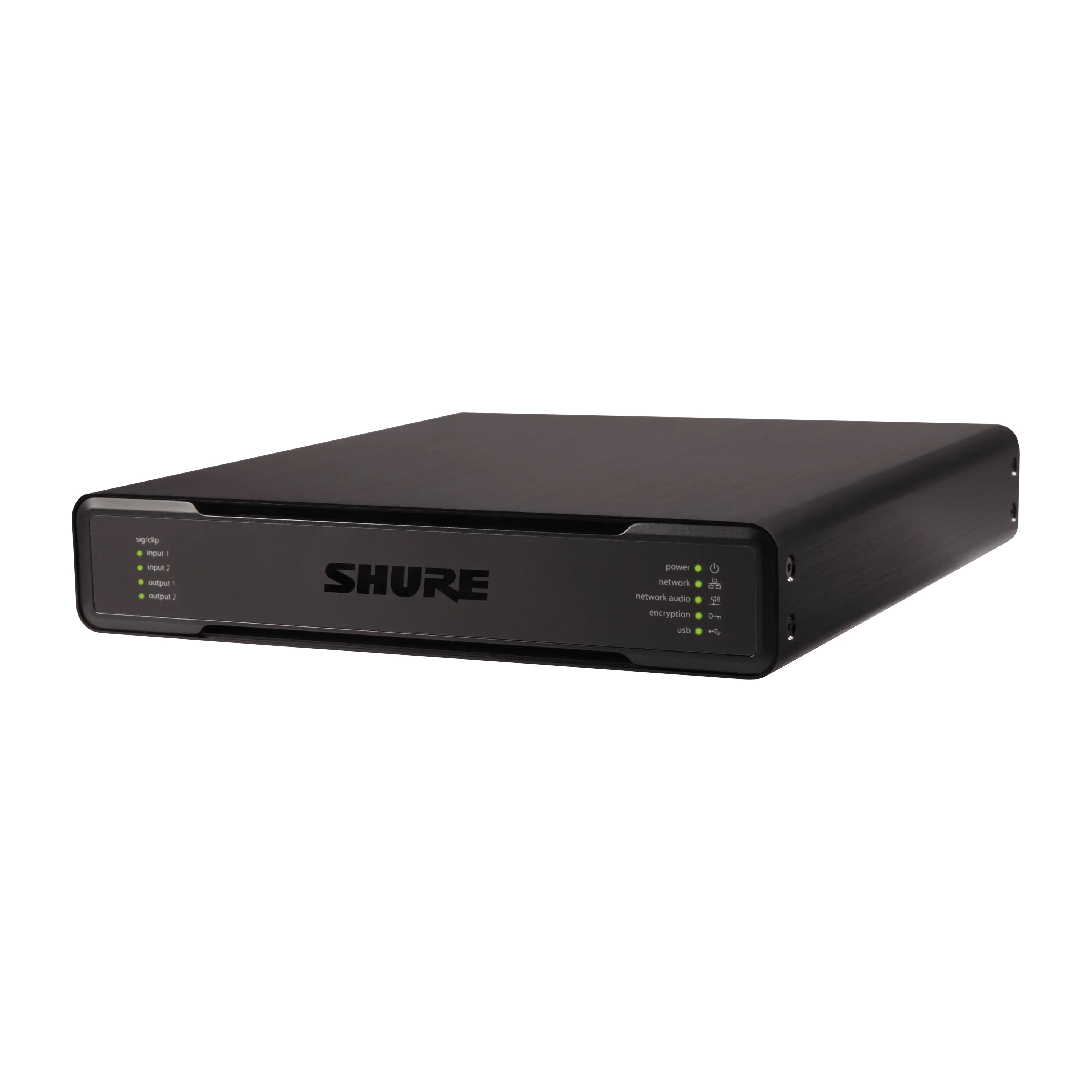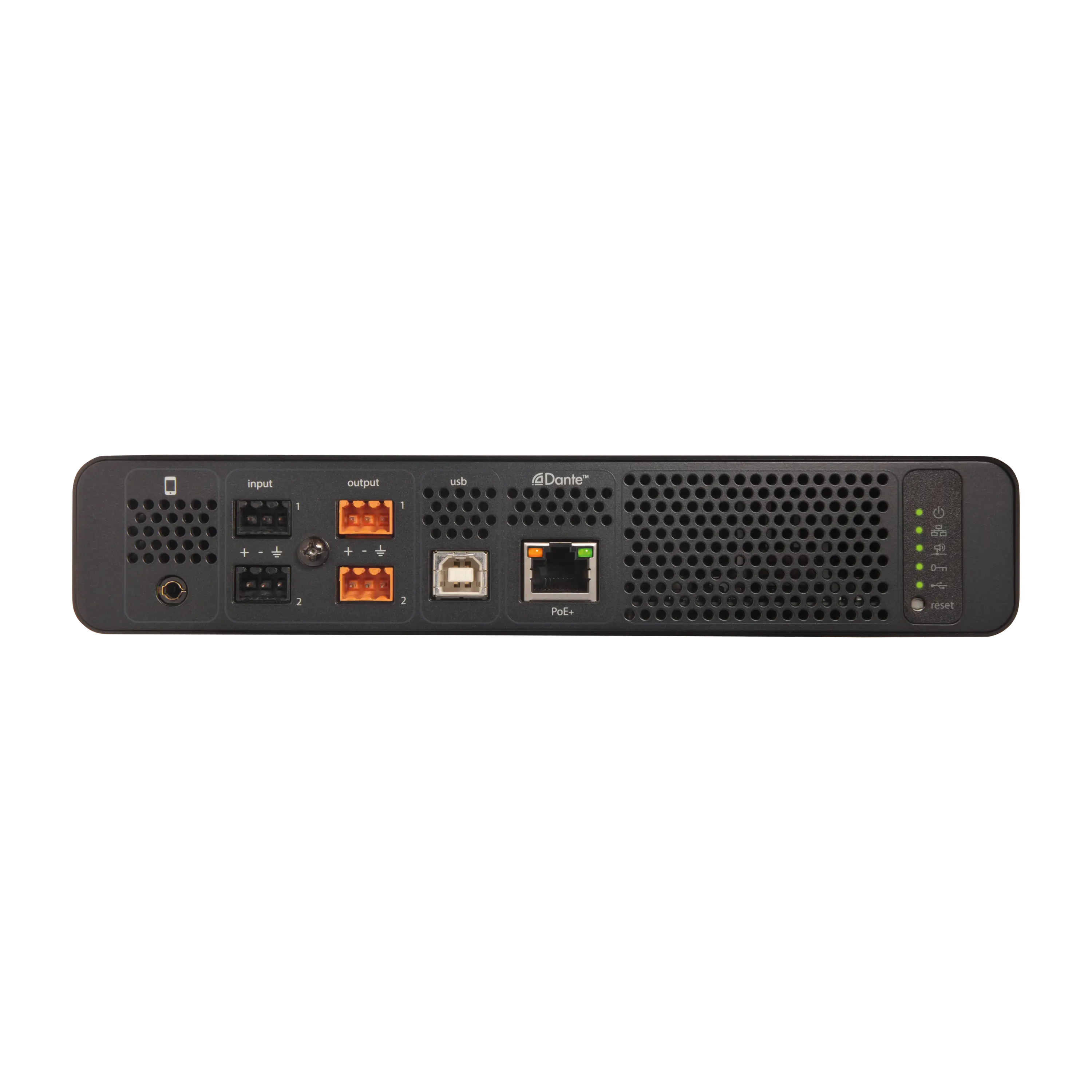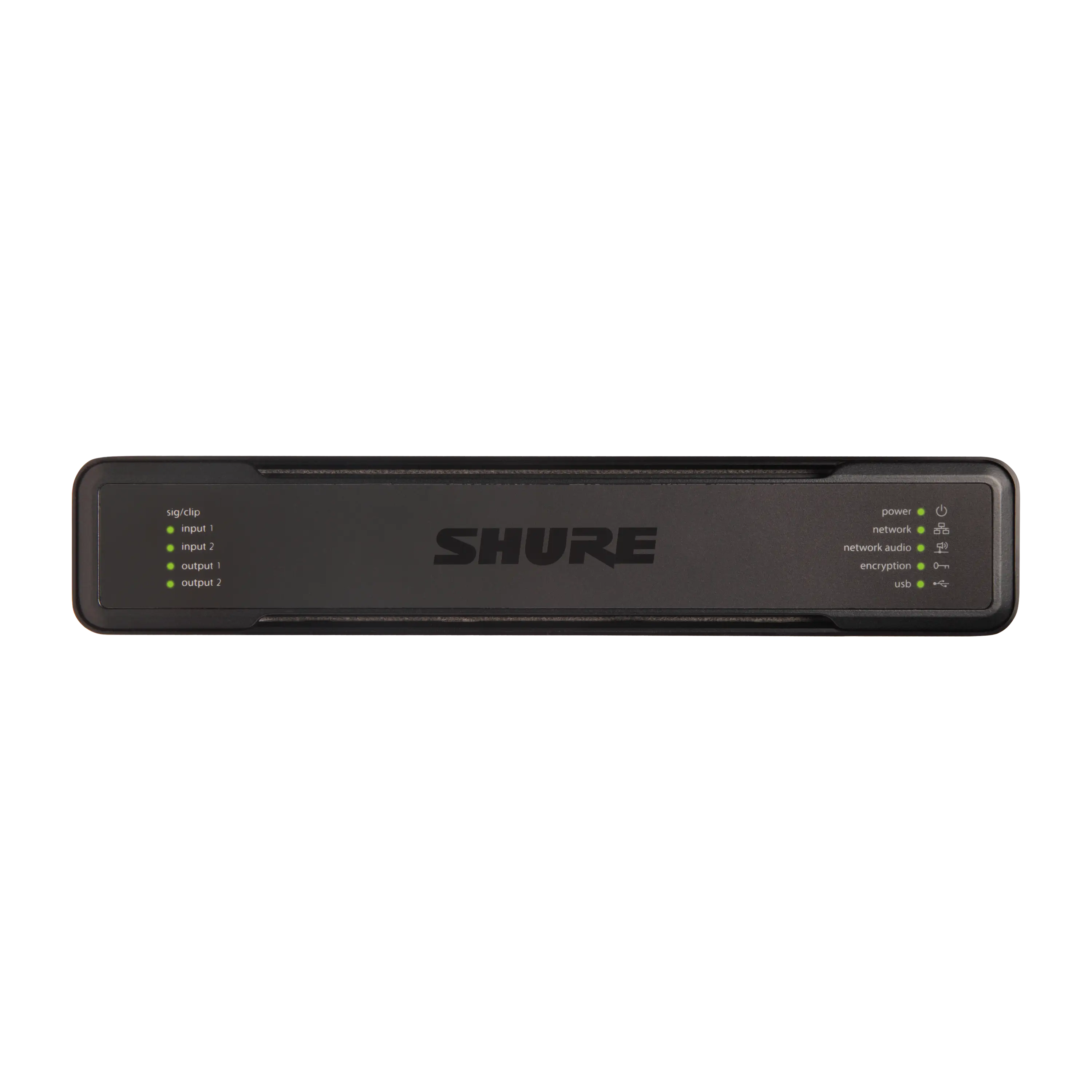Ricoh x Shure: Innovation Through Co-creation




In autumn 2018, global workplace technology leader Ricoh opened the Ricoh Business Innovation Lounge in Tokyo's Tamachi district. Designed to provide opportunities for customers and collaborators to engage, hands-on, with Ricoh's state-of-the-art products and cutting-edge technologies, the Lounge welcomed representatives of nearly 50 companies in its first two months. Ricoh hopes that this new space will continue to serve as a spark for "co-creation" between companies in different industries and fields.
The Technology Inside the Innovation Lounge Presents New Value
Ricoh chose Shure's MXA910 Ceiling Array Microphone and P300 IntelliMix® Audio Conferencing Processor for the main sound system inside the Lounge. The capabilities of the MXA910 are fully utilized as a pick-up microphone for the interactive whiteboard currently in development at Ricoh.

We sat down with Hiroyuki Kimbara from Ricoh's Product Strategy Office and Hidetoshi Kikuchi from Ricoh Japan's Marketing Center to discuss Ricoh's workplace innovation efforts, the concept behind the Ricoh Business Innovation Lounge Tokyo and what led Ricoh to equip this new facility with Shure products.
Yuki Otomo: Ricoh is known as an established copier and printer manufacturer, but it actually offers a host of different products and services. Can you tell me how Ricoh has gone about expanding the scope of its business?
Hiroyuki Kimbara: Before everyone started talking about workplace innovation, Ricoh was already developing products focused on making work more efficient. For example, the paper that copiers and printers use is physical, but the content printed on that paper exists as information. If that information can be digitized, it improves efficiency.

When information exists as digital data, it can be printed onto paper, and easily manipulated for other purposes; for instance, projection onto big screens or transmission to distant locations. This line of thinking led to a steady evolution in Ricoh's copiers and printers. It also fueled the development of a more diverse product lineup that includes projectors, video, web conferencing systems and the like.
In order to efficiently use the copiers and printers in an office, it is important that, among other things, you tailor their features to the application at hand or reduce copiers if they aren't used. This approach led Ricoh to expand into "managed service" and other business and services offerings. Over time, Ricoh was transformed from a manufacturer to an office solutions provider.
Otomo: The perspective you're describing is the same one that we employ at Shure. While Shure is an audio equipment manufacturer and seller, we have found that when we present our products to users representing companies, government offices or schools, simply telling them that "Our products sound good," is often not enough to convey the products' value to them. Customers see audio equipment as nothing more than a conference room component, but when we explain how a particular device will change the way meetings work, we get a positive response.
Has Japan's major push for work style innovation provided a boost for Ricoh's business?
Kimbara: Yes, it certainly has. It has meant more business opportunities, and it has further raised the bar for our content proposals to customers. In the past, the extent of our discussions would center around the number of projects and whiteboards the customer required for their new conference room. Now, we need to tailor our proposals to show how they will facilitate work style innovation.
In fact, customers contact us to learn what the conference room of the future will look like. They'll ask us to incorporate those ideas into a proposal for a conference room to be installed in 2020.
Otomo:Wow, that's pressure! (laughs)
Kimbara:In terms of production development, the number of patterns requested has increased. For example, whereas a lineup featuring one or two types of conference room projectors was sufficient in the past, the huge range in the types of conference rooms has required us to expand the type and variety of products we offer. Thus, our product lineup continues to expand.
Hidetoshi Kikuchi: The push for work style innovation is leading customers to seek out new work styles, and I think we have seen where this trend will lead.

Customers will no longer be satisfied with proposals that deliver the status quo. Although this creates a great deal of pressure, it has also forced us to reaffirm the potential for new value creation that Ricoh, as a manufacturer, and its subsidiary Ricoh Japan, can offer together as "one Ricoh."
Otomo:I really agree with your point. Shure also enjoys the advantage of having a lot of unique and distinctive technology as well as a broad range of products developed over the company's long history. When a customer asks us to give them some interesting ideas, we have a robust product lineup that allows us to meet their specific needs. The promotion of work style innovation has definitely resulted in customer requests becoming more diverse, but handling diverse requests is one of Shure's strong suits.
At Ricoh, are you undertaking any initiatives to improve your work efficiency in-house?
Kikuchi: Ricoh has been proactively pursuing ways to streamline its business for many years now. We introduced "hot desk offices" roughly ten years ago, and since then the number of desks in our sales department has decreased by about 30%.
At the time, we switched our sales force's computer terminals over to Apple iPads, which allowed team members greater mobility in scheduling and visiting clients. As a result, we went from renting seven office floors to six, thus greatly reducing our overall costs.
Also, we have recently moved all employees to the Apple iPhone, changed from Lotus Notes to Microsoft Office 365 and introduced Microsoft One Drive in order to create a foundation for telecommuting.
Our mission is to come up with solutions for customers, but we cannot effectively communicate the value of these enhancements if we haven't tried them ourselves. Ricoh's fundamental approach is to offer customers new value that has emerged out of our own in-house implementation experiences. I think that's one of the defining features of Ricoh.
Otomo:That's quite a progressive approach.
Kikuchi:Self-management and responsibility are a crucial part of new work styles. Take telecommuting, for example. What employees do when they are not in the office is up to them. To get employees to productively perform their work outside of the office requires a sense of responsibility on their part. I believe that the importance of work style innovationhinges on the self-management that comes with freedom and responsibility.

Ricoh Business Innovation Lounge Tokyo
Otomo: In September 2018, Ricoh opened its Ricoh Business Innovation Lounge Tokyo [hereafter, the "Ricoh BIL Tokyo"] in Tokyo's Tamachi district. What made you decide to set up this new style of showroom?
Kikuchi:"Empowering Digital Workplaces" is the value proposition being offered by the Ricoh Group, and we are delivering on that through a variety of business solution ideas. However, we felt that simply using television commercials and other advertising to state the proposition was insufficient. We felt that customers needed a space where they could experience an environment like that in the real world.
Similar to how landing pages are used in online media, this space was thought up as a sort of "landing spot" for customers who want to see what our value proposition looks like in action. There are already plenty of showrooms out there that let customers demo products, but where those showrooms present their products "as-is," the Ricoh BIL Tokyo goes beyond the products' "as-is" to show customers the products' "to-be." We can introduce our road map for the future to the customers who visit the Ricoh BIL Tokyo and show them the values and view of the world for which we are striving. We believe that this will foster expectations for our future products, as well as current product.
There was also a sense of urgency to open the space. The rapid acceleration in development of IoT, AI and 5G is increasing the speed at which customers are able to obtain information. Rather than introduce our products and services in a piecemeal fashion, we believed that we could create new value by sharing Ricoh's whole vision of the future.
We can also learn from the reactions of our customers who tested our new technology prior to launch. We have created a space where both Ricoh and our customers can achieve co-creation, and that space is the Ricoh BIL Tokyo.

Otomo: What, specifically, is available in this space for customers to experience?
Kikuchi: Customers will find innovations for improving meeting productivity, enhancing the sense of "presence" in telecommuting, streamlining work processes and facilitating digital data-driven workplaces. Visitors can bring with them the challenges that they face in implementing work style innovation and then evaluate different ways that Ricoh's latest technology combined with IoT capabilities can help them meet those challenges.
Additionally, the Ricoh BIL Tokyo offers a variety of resources, such as printing technology applications and projection mapping that will help customers find ways to enhance their corporate value, as well as product and brand value.
Otomo: It does not seem to be widely advertised, but many companies have already visited Ricoh BIL Tokyo.
Kikuchi:We had 48 companies visit in the two months after opening. Usually, one company in the morning and another company in the afternoon. The average stay time is about 2 hours, so it would be operating almost every day. We are so happy to hear that everyone seems to get some tips.
We do not advertise widely because we would like to invite the management of companies that have a relationship with Ricoh Japan. We are very strong in customer relations, so we are planning to provide a firm face-to-face connection.
Otomo: The Ricoh BIL Tokyo has been equipped with Shure's MXA910 Ceiling Array Microphone and P300 IntelliMix Audio Conferencing Processor. This started with an opportunity that Kimbara's team contacted Shure about testing a microphone for an interactive whiteboard.
Kimbara: Meetings and conferences involve discussing topics while reading and writing various documents. Although 90% or more of meetings and conferences are discussions, we don't preserve all of it as audio data. We simply keep a record of the results and action items that resulted from the meeting. This often makes it impossible to share the background and reasoning that led to these results with people who weren't in attendance, causing the same issues to be rehashed and debated again at subsequent meetings. So, we came up with the idea of developing a product that uses voice recognition to automatically create a digital record of what is spoken, so that it can then be shared and reused.

This was the inspiration for an interactive whiteboard, which displays each attendees' remarks in real-time and automatically uploads text and audio data to a server. To create such a product, we needed a microphone with outstanding audio pick-up capability. After trying out a number of different manufacturers' products, we found Shure's to be the best.
Ricoh has a development center in the United States, so we had the U.S. team get in touch with the Shure head office in Chicago. The project proceeded in tandem between Japan and the U.S.
Unfortunately, though, no matter how perfect the conditions were, we just weren't able to achieve a 100% voice recognition rate. We are still trying to find a way to work with a voice recognition rate of 70-80%, for example, using what's written on the whiteboard to supplement what couldn't be captured with voice recognition.
Otomo: No two conference rooms are the same, and that means each proposal has to be tailored to the specific needs of each room, such as its size and dimensions and how the tables are arranged within it.
With regard to voice recognition, the rate could probably be improved by having everyone use a hand-held microphone when speaking, but that hinders the natural flow of communication. In the current case, Shure brought different devices and equipment into Ricoh's offices, as well as the still-in-development whiteboard to examine, and went through a trial and error process based on the opinions of various engineers in-house about how to improve the voice recognition rate. We tried every type of plausible microphone idea, from wireless and wired to gooseneck and ceiling-array microphone. For a company like Shure, this project was extremely interesting as well as a real learning experience.
Kikuchi: The Shure system was installed in the conference room at Ricoh's headquarters. The installation at the Ricoh BIL Tokyo represents Phase Two.

Because the Ricoh BIL Tokyo is a space visited by a lot of different company representatives, we wanted them to experience the interactive whiteboard equipped with Shure's system. Before installing it, Shure gave us a demo of the system at their office, and it really blew us away.
We held a meeting attended by eight people, and the system was able to record each and every person individually. Because this was a discussion meeting, there weren't really any clear pauses between one person finishing speaking and the next person starting, and it also means that there were lots of instances of people talking at the same time and engaging one another in verbal interactions. We were amazed that one microphone could pick up and record all of that so well.
Otomo: Of the various products that Shure has introduced in the past several years, the MXA910, which is installed in the Ricoh BIL Tokyo, is perhaps one of the most unique. Inside a single, slim case are more than 100 microphone units capable of picking up far-off sounds within an extremely narrow spread as well as capturing multiple, simultaneous voices with incredible precision. This space is divided into eight different zones from which sound is picked up and recorded.
Kikuchi: When you use headphones, there is absolutely no noise and you can hear the people nearby who are speaking softly. This level of sensitivity is going to make it impossible to discreetly ask the person next to you in a meeting if they want to grab a drink after work. (laughs)
Every guest who has visited Ricoh BIL Tokyo has marveled at the performance of this microphone. Whenever we talk about microphones, everyone starts looking around at the desktops, when in fact the microphone is installed in the ceiling. We've had more than a few representatives comment that this is what they want for their next conference room.
Kimbara: This project has reminded us of the importance of sound. We take it for granted during normal meetings, but when you have audio or video conferencing, the quality of your microphones and speakers has a tremendous impact on communication.
Otomo: That's very true. You can't have a successful meeting if your sound cuts out. However, the reality is that the investment in sound quality is not commensurate with the importance it plays in their operations. Our market research shows that sound system investment comprises around 5% of the total amount spent on AV systems as a whole. Meanwhile, results from the same research revealed that 75% of information exchange during conferences and meetings is done via audible communication. This means that there is a gap of around 70% between investment and need.
At Shure, all we can do is let customers experience our products and realize for themselves how important sound is. Our goal is not to sell high-priced sound systems; rather, it is to introduce systems that will contribute our customers' businesses succeed. I urge everyone to come and experience the Ricoh BIL Tokyo and Shure experience center for themselves.
Kikuchi: We were able to complete the Ricoh BIL Tokyo thanks to the help of Shure, whose technological capabilities are absolutely astounding.
At the same time, this serves as a reminder of the importance of open innovation involving cutting-edge companies specialized in different fields working together to create new value. For example, another company could join Ricoh and Shure in the future to allow us to achieve collaboration amongst three companies. And we will be thrilled if the Ricoh BIL Tokyo can serve as the trigger that ignites this sort of co-creation.
Otomo: Thank you both very much for taking the time to be here today.




